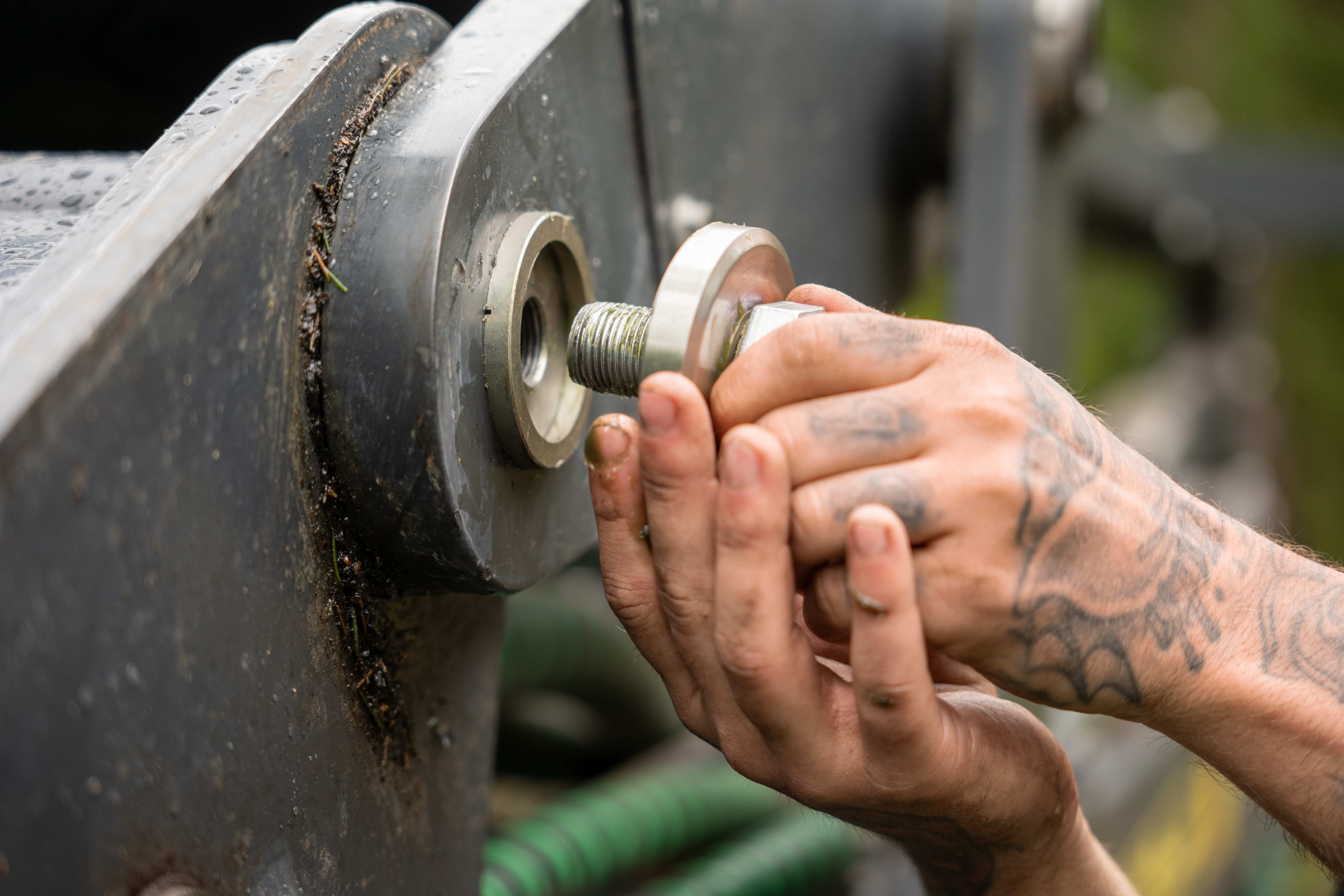The hidden costs of pivot maintenance
Learning more about the unseen overhead of traditional pivot pins coincides with gaining a better appreciation of the Expander® System.
Maintaining the pivot mechanisms of heavy-duty machinery isn't easy. An essential component for the critical movements and functions of powerful industrial machines – like haul trucks in mining, tree harvesters in forestry, and excavators in construction – it often requires continued upkeep in the face of extreme forces. And that comes with a price – whether in terms of time, labor, or equipment.
Some costs are obvious – like lubrication for certain traditional pivot pin applications, with staff and time allocated for manual greasing. Other costs, however, are far from obvious. These are aspects of pivot pin maintenance that create overhead, like sudden unscheduled repairs. According to Robin Persson, Head of Sales for Expander, such hidden costs have a long-term effect on operational expenses.
“While pin maintenance costs may seem minimal on paper, they add up over time,” he says. “These costs can significantly affect the total cost of ownership – reducing productivity, increasing downtime, and potentially causing safety hazards.”

“Escalating costs in both parts and labor”
Like any mechanical component, pivot pins are subject to wear and tear from regular use. “Over time, pins wear down and require more frequent maintenance, leading to escalating costs in both parts and labor,” says Persson.
The costs of keeping a machine’s pivot pins functioning – either through hard-to-calculate downtime or operational inefficiency – usually occur later in a machine's lifecycle and are not "obvious" until failure happens.
Nevertheless, with a solution like the Expander System, such hidden costs can be avoided.
Surprising savings again and again
Rarely do those who install Expander immediately grasp just how much savings it entails compared to traditional pivot pins.
“Over time, many customers realize that the Expander System brings benefits that they might not have calculated from the beginning,” explains Olofsson.
“They’re aware of the hidden costs issue but just not aware of how our solution helps to minimize it,” Persson adds.
Most initial interest in switching from traditional pivot pins to Expander stems from its simple, quick installation. The tapered ends and sleeves make it easy to push in and don’t require line boring or welding. However, customers soon discover removal is similarly straightforward with no risk of seizing or having to cut the system out. Consequently, their planned maintenance is immediately more calculable and efficient. They also find that Expander's in-bore locking design not only repairs and eliminates lug wear, but also simplifies the pivot design and extends the life of the machine’s bushings and bearings.
According to Olofsson, all those advantages – from shorter downtime to less maintenance – add up throughout the Expander System’s entire usage. “Even with the first installation, it's more cost-efficient to put in Expander,” he says. “But if you look at the next 10-year life cycle, then you will save over and over and over. So, it multiplies those savings.”